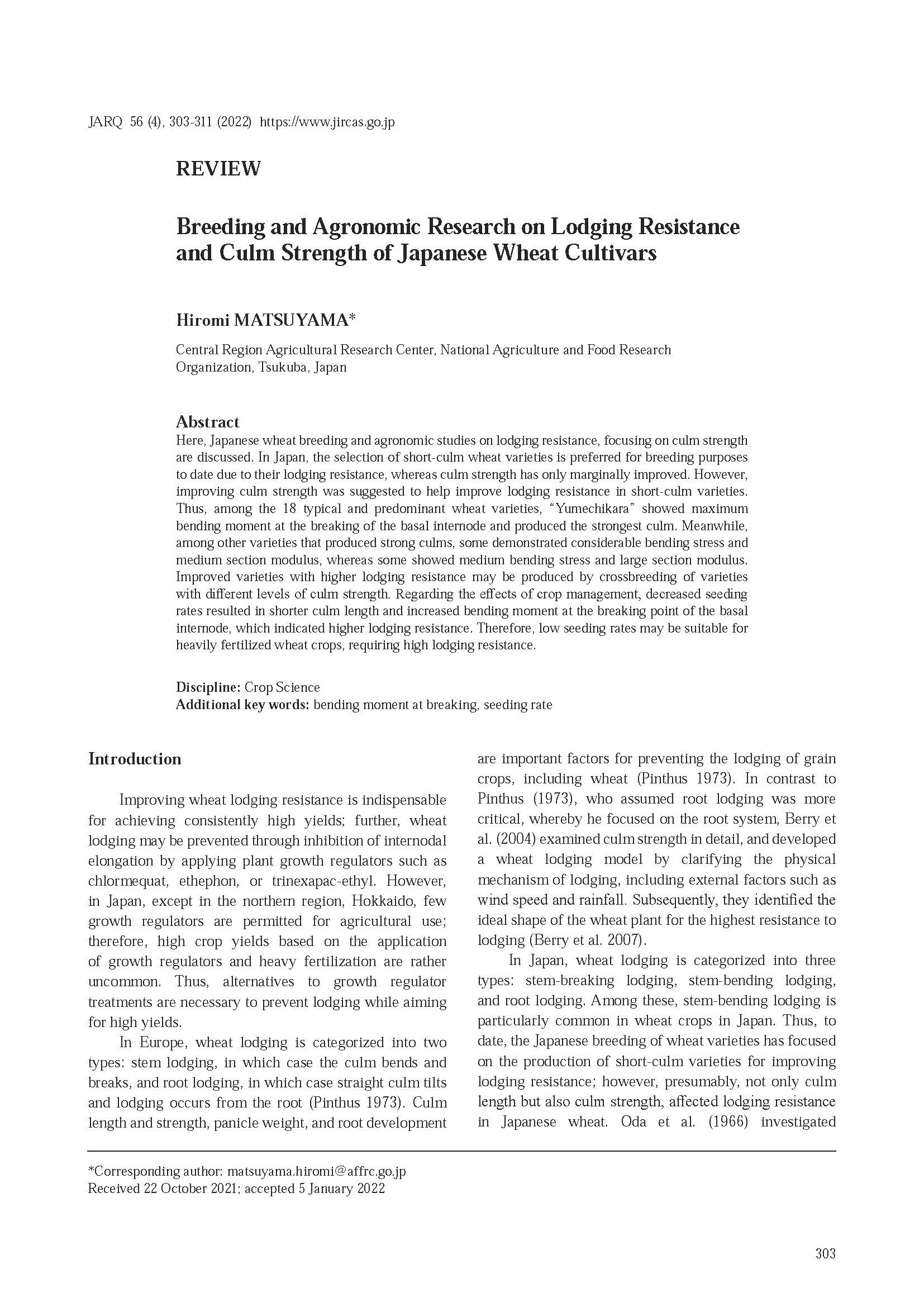Here, Japanese wheat breeding and agronomic studies on lodging resistance, focusing on culm strength are discussed. In Japan, the selection of short-culm wheat varieties is preferred for breeding purposes to date due to their lodging resistance, whereas culm strength has only marginally improved. However, improving culm strength was suggested to help improve lodging resistance in short-culm varieties. Thus, among the 18 typical and predominant wheat varieties, “Yumechikara” showed maximum bending moment at the breaking of the basal internode and produced the strongest culm. Meanwhile, among other varieties that produced strong culms, some demonstrated considerable bending stress and medium section modulus, whereas some showed medium bending stress and large section modulus. Improved varieties with higher lodging resistance may be produced by crossbreeding of varieties with different levels of culm strength. Regarding the effects of crop management, decreased seeding rates resulted in shorter culm length and increased bending moment at the breaking point of the basal internode, which indicated higher lodging resistance. Therefore, low seeding rates may be suitable for heavily fertilized wheat crops, requiring high lodging resistance.

